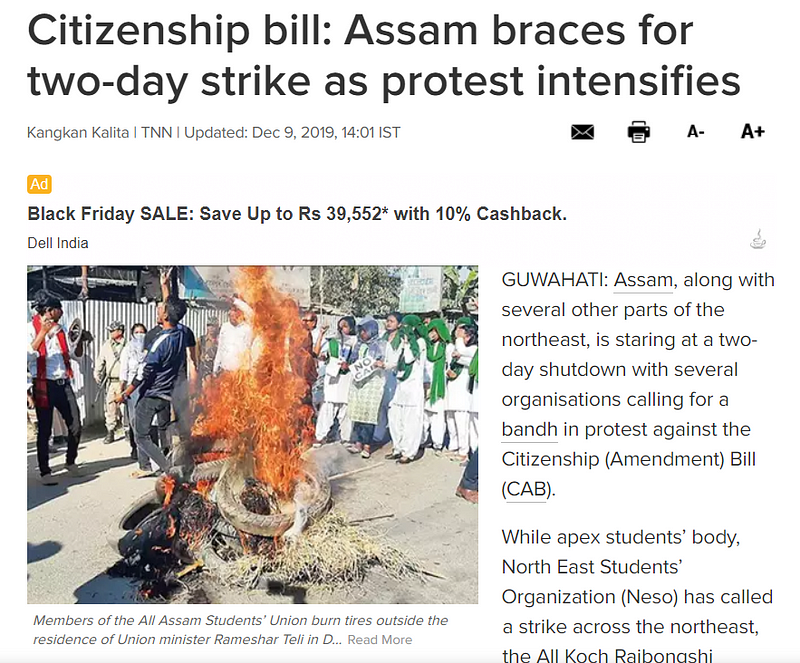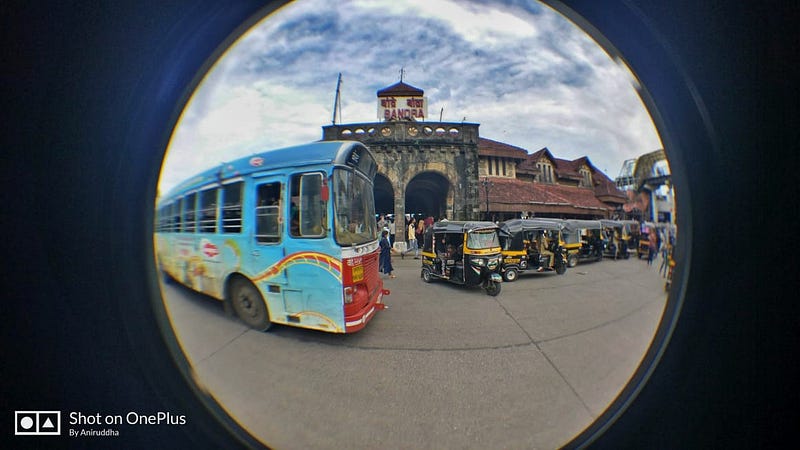Refugees deserve our compassion, not disdain.
The Citizenship Amendment Bill in a north-eastern state of India and all you need to know about it.

The Citizenship Amendment Bill in a north-eastern state of India and all you need to know about it.
If you don’t belong to the subcontinent, you might not know about what is going on regarding the NRC and the CAB in India’s north-eastern province, Assam. Here is a brief introduction to this burning issue and my take on how the hullabaloo can be solved.
What is the difference between the NRC and the CAB:
As G Plus pointed out,
The NRC is the National Registers Citizens of India. It consists of the names of Indian citizens of Assam. The NRC was first prepared in 1951 to make a registry of all legal citizens residing in Indian domicile.
However, it is not accurate in today’s date because a lot of illegal immigrants from Bangladesh had come into Assam during and after the 1971 war. And the 1951 NRC also does not consist of the names of the Genuine Indian Citizens who may have migrated to Assam post 1951. Hence The NRC list is being made again.
As opposed to that, as The Economic Times points out,
The Citizenship Amendment Bill (the CAB, in short) seeks to give Indian nationality to non-Muslim refugees from Pakistan, Bangladesh and Afghanistan. The bill seeks to address the historical wrongdoings of religious persecution on Non-Muslim refugees from the three states by providing them Indian citizenship. The proposed legislation amends the Citizenship Act, 1955 to make Hindus, Sikhs, Buddhists, Christians and Parsis who got into India from Afghanistan, Bangladesh and Pakistan eligible for citizenship.
The Bill was an election promise of the BJP in the 2014 and 2019 Lok Sabha polls. Defence minister Rajnath Singh recently said in a press release, “Minorities in the neighbouring theocratic countries have been subjected to continuous persecutions, which forced them to seek asylum in India. Giving citizenship to six minorities will be yet another push from the Modi government to the spirit of ‘sarva dharma sambhav’.”
Why is the CAB leading to violence in the region:
The reason behind the hue and cry regarding this bill is that the opposition says it violates Article 14 of the Constitution — the Right to Equality. They claim that citizenship cannot be given on the basis of religion. Congress MP Shashi Tharoor said it violates the basic idea of India that religion can never be a reason for citizenship.
Some people, especially the ones sharing blatant Assamese-vs-Bengali posts on social media, have made this into a language issue. The logic here is that the original settlers of Assam speak the Assamese language, while the people of Bangladesh speak Bengali. That being said, there are a lot of Bengali-speaking people already living in Assam since before 1971 (the year the nation Bangladesh was formed). People who spread such hatred between the two ethnicities claim that the CAB is a ploy by the Assamese government to make the state of Assam Bengali-free. Such people don’t understand that this isn’t a “Neither can live while the other survives scenario”.
Rumours versus truth:
In truth, the Assamese people want the Bangladeshi immigrants to leave. Not because they don’t feel empathetic towards their plight. But because India is a poor country and it doesn’t have enough space or resources to welcome people of another nation. Guwahati, Jorhat, and Tezpur — the three biggest cities of Assam — are already crowded to the bursting point without the Bangladeshi people further taking up space. Moreover, many of these Bangladeshis have pathetic living conditions in Assam because of their poverty and lack of opportunities. They end up pulling rickshaws for a pittance, working as construction labourers, and operating streetside stores selling cheap toys or balloons. Sadly, the world turns them to petty criminals sometimes, making lives of the Assamese unsafe. In recent news, a 12-year-old girl was raped and murdered in Nagaon, Assam by a Bangladeshi man.

What can be a solution to the CAB problem?
I believe, the solution to such a problem is that the UN should step in here and provide asylum for Bangladeshi emigrants in richer countries willing to welcome them.
Sending them back to Bangladesh would only compound their problems. Keeping them in India wouldn’t do them any good either. They can never have a decent livelihood here, no matter their potential.
The biggest tragedy is that society thinks of the refugees as poor, “dirty” people. They could very well have been as educated and rich as you are, but then, their house was bombed by terrorists, their parents killed at 16, and then had to live on the streets for 10+ years. A life of sorrows have hardened them and made them more resilient. This doesn’t mean they deserve no better. If they live the rest of their lives in India, they can never be doctors, engineers, lawyers, singers, players, or authors.
In treating homeless people as vermin, it is robbing them of the life they could have had, had they been provided equal opportunities.
The world should strive to hate less and love more. It needs to be a kinder place for the refugees.
The refugees are humans, after all.
They don’t wish for the world’s disdain. They desire the world’s compassion.
Nadia Hashimi, in her brilliant novel about emigration and the life of a refugee, “When the Moon is low”, says
It’s never easy to leave one’s home, especially when there are only closed doors ahead of you.
